-
Groundwater quality changes alongside the expansion of hydraulic fracturing and horizontal drilling
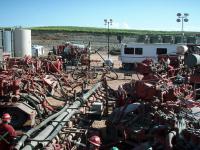
New research demonstrates that groundwater quality changes alongside the expansion of horizontal drilling and hydraulic fracturing but also suggests that some potentially hazardous effects may dissipate over time. The research is the first to analyze groundwater quality in the Cline Shale region of West Texas before, during, and after the expansion of hydraulic fracturing and horizontal drilling.
-
-
More money for nuclear safety pledged on Chernobyl 30th anniversary
The EU and other global donors have pledged an additional $99 million to help secure the Chernobyl power plant, as ceremonies in the Ukraine mark thirty years since the disaster. The money will be used to construct a new spent nuclear waste storage facility, adding to the €2 billion already donated to helping clean up and secure the Chernobyl site. A new giant $1.7 billion steel structure will be placed over the nuclear reactor this year to prevent further radioactive leaks. The old concrete structure was put together after the meltdown, but experts say it is not leak-proof and that, in any event, it is beginning to show its age.
-
-
The legacy of Chernobyl -- 30 years on
The 26 April 2016 marks the 30th anniversary of the Chernobyl nuclear accident. For many, especially those born since 1986, it is a word they know without appreciating the full significance of what happened on that day. For others, it was a life changing catastrophe which resulted in largest release of radioactivity in the history of nuclear energy.
-
-
Dealing with irradiated nuclear graphite
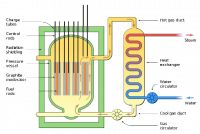
Since the beginning of the nuclear power industry, a large number of channel uranium-graphite nuclear power reactors was built across the world. To date, they all are on the output stage of the operation or decommissioning preparation. Approximately 250,000 tons of irradiated graphite are accumulated in the world, including ~ 60,000 tons in Russia. Due to the specificity of irradiated graphite, the treatment of this type of radioactive waste has not been determined yet.
-
-
“G-Science” academies call for strengthening global disaster resilience

In the decade between 2005 and 2014, more than 6,000 natural and technological disasters occurred around the world, killing more than 0.8 million people, displacing millions more, and costing more than $1 trillion. Losses due to disasters are increasing in both developed and developing countries. Human factors that increase exposure and vulnerability, such as poverty, rapid population growth, disorderly urbanization, corruption, conflict and changes in land use, poor infrastructure including non-engineered housing, together with effects of climate change on weather patterns with increased extreme events, aggravate the negative consequences of natural and technological hazards.
-
-
A single oil field a key culprit in global ethane gas increase
A single U.S. shale oil field is responsible for much of the past decade’s increase in global atmospheric levels of ethane, a gas that can damage air quality and impact climate, according to a new study. The researchers found that the Bakken Formation, an oil and gas field in North Dakota and Montana, is emitting roughly 2 percent of the globe’s ethane. This is about 250,000 tons per year.
-
-
Forget Fukushima: Chernobyl still holds record as worst nuclear accident for public health
The 1986 Chernobyl and 2011 Fukushima nuclear power plant accidents both share the notorious distinction of attaining the highest accident rating on the International Atomic Energy Agency (IAEA) scale of nuclear accidents. No other reactor incident has ever received this Level 7 “major accident” designation in the history of nuclear power. But the IAEA scale isn’t designed to measure public health impact. Chernobyl is by far the worst nuclear power plant accident of all time. It was a totally human-made event which was made worse by incompetent workers who did all the wrong things when attempting to avert a meltdown. Fukushima in contrast, was an unfortunate natural disaster – caused by a tsunami that flooded reactor basements — and the workers acted responsibly to mitigate the damage despite loss of electrical power. In terms of health ramifications, these two nuclear accidents were not even in the same league. While Fukushima involved radioactivity exposures to hundreds of thousands of people, Chernobyl exposed hundreds of millions. And millions of those received substantially more exposure than the people of Fukushima.
-
-
New Web portal for coastal resilience
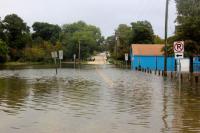
William & Mary Law School and William & Mary’s Virginia Institute of Marine Science (VIMS) are collaborating on a new Web site which will provide key information to support local, regional, and state efforts to adapt to sea-level rise. Tidal and storm surge flooding risks, FEMA flood zone maps, storm history, and critical infrastructure risk assessments are all topics that are likely to be included on the Web site. Information about conditions of shorelines, wetlands, beaches, and coastal forests will also be in the portal.
-
-
1.5°C vs 2°C global warming: Half a degree makes a big difference

European researchers have found substantially different climate change impacts for a global warming of 1.5°C and 2°C by 2100, the two temperature limits included in the Paris climate agreement. The additional 0.5°C would mean a 10-cm-higher global sea-level rise by 2100, longer heat waves, and would result in virtually all tropical coral reefs being at risk.
-
-
Belgium turns down Germany’s request to shutter two aging Belgian nuclear plants
Belgium on Wednesday turned down a request by Germany to shut down two ageing nuclear power near the German-Belgium border. Belgium said the two plants, while old, still meet the strictest safety standards. Both the Doel and Tihange power stations, in operation since 1974, were scheduled to be shut down and decommissioned in 2015.
-
-
Robot offers safer, more efficient way to inspect power lines
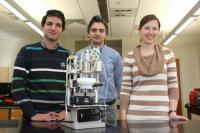
Currently, line crews have to suit up in protective clothing, employ elaborate safety procedures, and sometimes completely shut off the power before inspecting a power line. It can be difficult, time-consuming, and often dangerous work. Researchers have invented a robot which could change the way power lines are inspected — providing a safer and more cost-effective alternative.
-
-
Fossil fuels could be phased out worldwide in a decade: Study
The worldwide reliance on burning fossil fuels to create energy could be phased out in a decade, according to energy experts. The experts analyzed energy transitions throughout history, and argue that only looking toward the past can often paint an overly bleak and unnecessary picture. The transition from wood to coal in Europe, for example, took between 96 and 160 years, whereas electricity took 47 to 69 years to enter into mainstream use. The future could be different: the scarcity of resources, the threat of climate change, and vastly improved technological learning and innovation could greatly accelerate a global shift to a cleaner energy future.
-
-
Paris attacks' mastermind had files on German nuclear waste facility
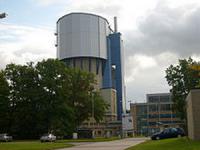
Salah Abdeslam, the mastermind of the November 2015 terrorist attacks who is now in custody in Belgium, had in his possession documents about a nuclear research center in Germany. The Juelich nuclear center near the Belgium-Germany border is used for the storage of nuclear waste.
-
-
Digital mapping project tracks the last moments of the victims of Japan’s 2011 tsunami
Digital archives track the evacuation patterns of 2011 Great East Japan Earthquake victims between the time the earthquake and tsunami struck. The Tokyo Metropolitan University researchers who created the digital archives say they will make use of the archive to analyze evacuation behaviors — encouraging people, for instance, to avoid overestimating evacuation sites and head to higher ground.
-
-
Texas earthquake may have been manmade, but more data needed to assess hazards
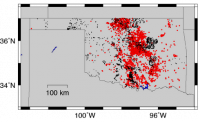
The most comprehensive analysis to date of a series of earthquakes that included a 4.8 magnitude event in East Texas in 2012 has found it plausible that the earthquakes were caused by wastewater injection. The findings also underscore the difficulty of conclusively tying specific earthquakes to human activity using currently available subsurface data.
-
More headlines
The long view
Helping Strengthen America’s Critical Infrastructure
Everyday life depends on a robust infrastructure network that provides access to running water, communications technology and electricity, among other basic necessities. The experts who keep our national infrastructure secure and resilient also need a strong network to share their knowledge and train the next generation of professionals capable of solving complex infrastructure challenges.
AI and the Future of the U.S. Electric Grid
Despite its age, the U.S. electric grid remains one of the great workhorses of modern life. Whether it can maintain that performance over the next few years may determine how well the U.S. competes in an AI-driven world.
Using Liquid Air for Grid-Scale Energy Storage
New research finds liquid air energy storage could be the lowest-cost option for ensuring a continuous power supply on a future grid dominated by carbon-free but intermittent sources of electricity.
Enhanced Geothermal Systems: A Promising Source of Round-the-Clock Energy
With its capacity to provide 24/7 power, many are warming up to the prospect of geothermal energy. Scientists are currently working to advance human-made reservoirs in Earth’s deep subsurface to stimulate the activity that exists within natural geothermal systems.
Experts Discuss Geothermal Potential
Geothermal energy harnesses the heat from within Earth—the term comes from the Greek words geo (earth) and therme (heat). It is an energy source that has the potential to power all our energy needs for billions of years.
